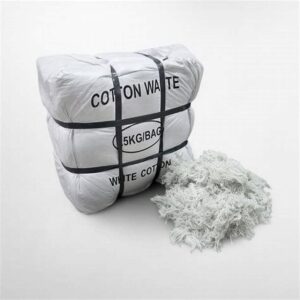White Cotton Waste Product Description
White cotton waste refers to the by-products generated during the processing of cotton fibers. This waste is primarily composed of short fibers, lint, and other remnants that are not suitable for spinning into yarn or fabric. Despite being considered waste, white cotton waste has various applications across different industries, making it a valuable resource. It is typically characterized by its soft texture, high absorbency, and natural biodegradability, which makes it an eco-friendly option for various uses.
Uses of White Cotton Waste
-
Textile Industry:
- Recycled into new yarns and fabrics.
- Used for stuffing in pillows, cushions, and toys.
-
Cleaning Products:
- Manufactured into cleaning rags and wipes due to its absorbent properties.
-
Medical Applications:
- Utilized in the production of bandages, gauze, and other medical supplies.
-
Insulation Material:
- Employed as insulation in various construction applications due to its thermal properties.
-
Composting:
- Added to compost piles as a natural fiber source, enhancing soil quality.
Technical Data
| Property | Description |
|---|---|
| Material Type | Cotton Waste |
| Color | White |
| Fiber Length | 1-2 inches (varies) |
| Moisture Content | 8-10% (typical) |
| Density | 0.5-0.7 g/cm³ |
| Absorbency | High (up to 25 times its weight) |
| Biodegradability | Fully biodegradable |
| Applications | Textiles, cleaning, medical, insulation, composting |
| Packaging | Bales or loose bulk |
Summary
White cotton waste is a versatile and eco-friendly product that finds utility in various sectors, from textiles to medical supplies. Its inherent properties, such as high absorbency and biodegradability, make it an attractive option for sustainable practices. By recycling and repurposing this waste, industries can contribute to environmental conservation while also benefiting from its practical applications.

